| |
Recommendations for Implementing Hepatitis C Virus Care
in Homeless Shelters: The Stakeholder Perspective
|
| |
| |
Download the PDF here
03 March 2020
We will not Eliminate HCV UNTIL the homeless are treated as well as during pregnancy.
On Site, No Wait Testing & Treatment - Peer Escorts to HCV Clinics designed to welcome these unique individuals to meet their unique needs quickly while welcoming & making them feel they are valuable & cared about.
Integrating services for HCV in shelter settings could mitigate several logistical barriers that PWID experiencing homelessness commonly encounter, such as other competing priorities that may cause a patient to miss an appointment.
In this model, a designated provider (a nurse in San Francisco and a pharmacist or physician assistant in Minneapolis) performs incentivized HCV point-of-care testing and confirmation of active infection, formal patient group education, assessment of treatment readiness, and links the patient to HCV therapy.(34)HCV therapy is offered by shelter practice providers or a designated onsite HCV nurse coordinator, as well as through referral to offsite primary care providers or hepatology specialists. This ongoing study seeks to evaluate whether this one-stop shop model of care can be applied in homeless shelter settings to reach HCV-infected persons who are homeless and improve their engagement along the continuum of HCV care.
Our results demonstrate shelter management in San Francisco and Minneapolis has high acceptability and buy-in for expanding HCV care. Although some of the identified barriers are difficult to modify, others may be more amenable to change, such as enhanced education for staff, a dedicated support system with trained personnel, peer-based education, and navigators and social support(25, 26) to enhance HCV knowledge. These were suggested as possible solutions to facilitate successful implementation. Our results further suggest that provision of linkage or integration of behavioral health services may enhance HCV treatment adherence, particularly among PWID. T he process of integration ranges from services co-located in a single clinic (27, 28)to facilitated behavioral health referrals at HCV treatment clinics, and may even include a mix of these; these service delivery models could also be considered for implementation in shelter settings. Similar approaches have been met with success in the treatment of HIV in PWID by integrating mental health or SUD treatment services within the context of anti-retroviral treatment delivery.(29)
"Participants stated that engaging existing social service providers and outreach workers catering to homeless individuals helped broker trust between clients and health care providers. These social service agencies assisted clients in establishing health insurance, providing case management, offering harm-reduction programs to patients with SUDs, and providing referrals. Participants especially praised the collaboration with local social services agencies that assisted in screening clients at the homeless shelters and helping to track patients in the community.
Participants defined competing priorities as acts of daily living that require greater effort due to housing status, such as needing to secure food, engaging in personal hygiene, meeting employment responsibilities when present, and lack of transportation.
It's a very chaotic world (for patients) and there's competing priorities. I gotta eat; I got to find some shoes"
RESULTS
At the societal level, health insurance was the predominant theme. System-level themes included workforce constraints, changing the HCV treatment narrative, low HCV treatment knowledge, shelter policies, high acceptability and buy-in from staff, and linkage with social service outreach workers. Individual-level themes included competing priorities, behavioral health needs, health attitudes, and prescriber's attitudes about people who inject drugs (PWID). Below, we describe examples related to the major themes identified within societal, system, and individual-level factors.
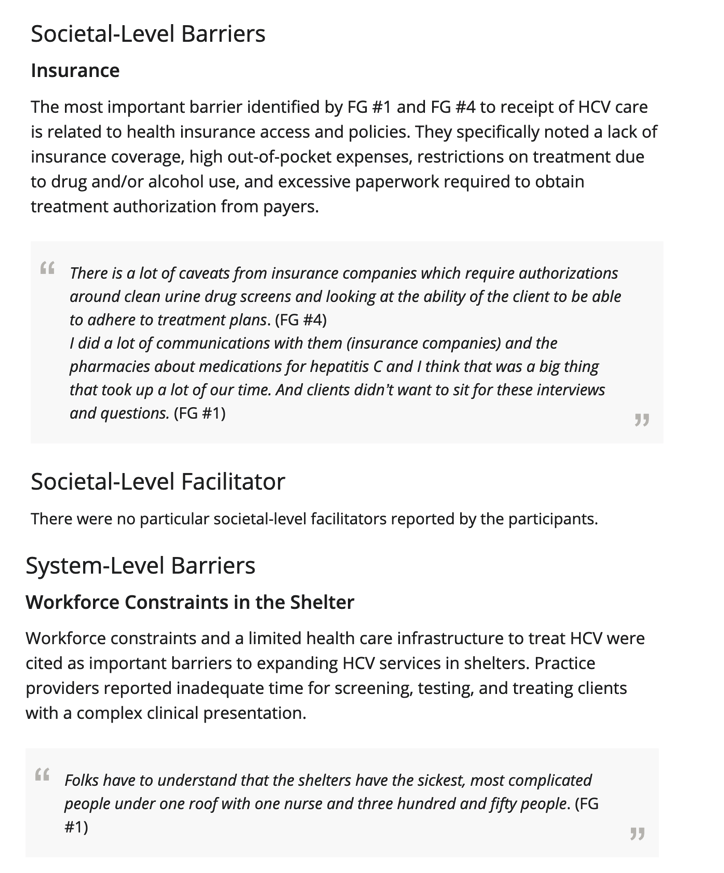
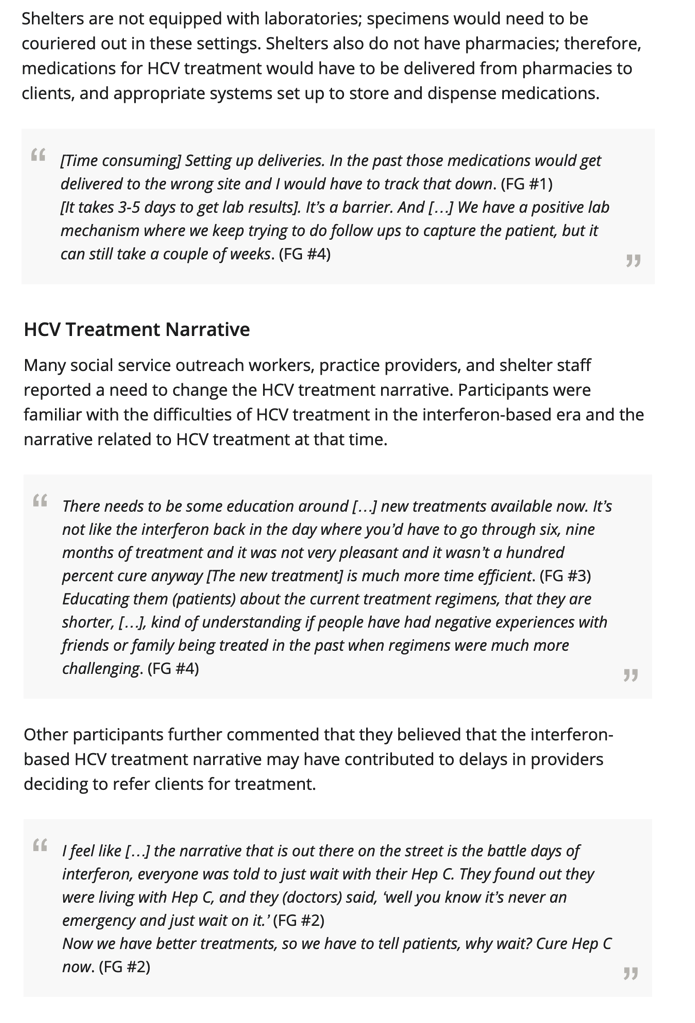
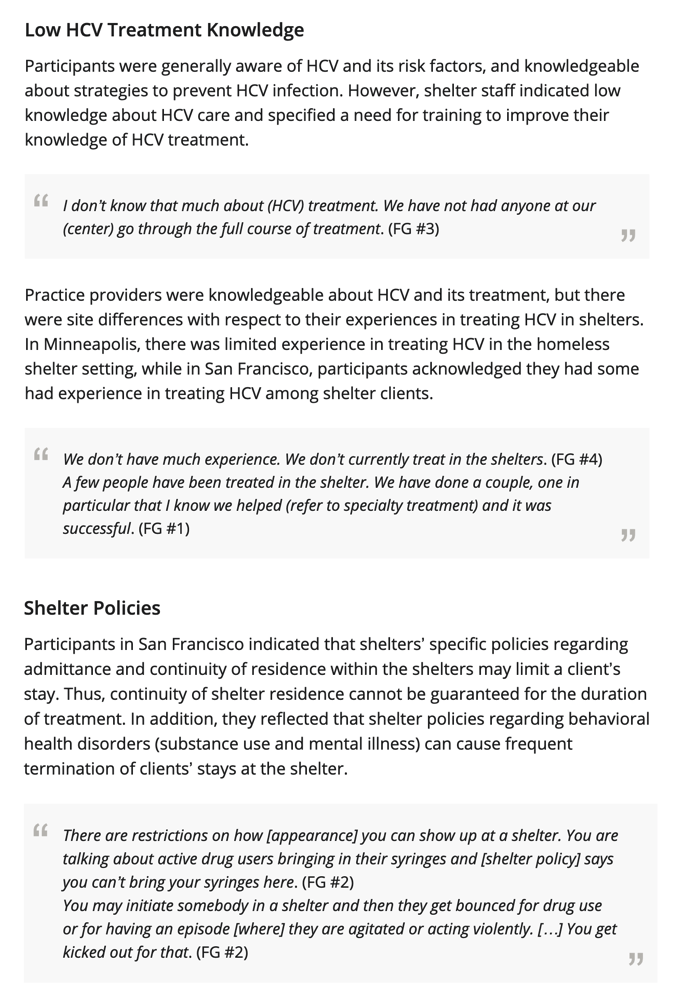
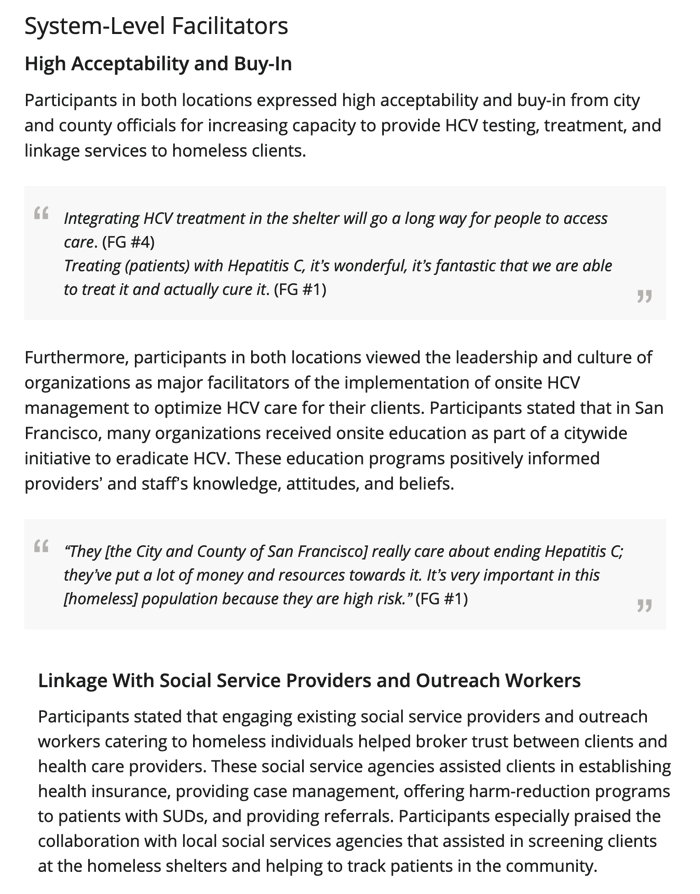
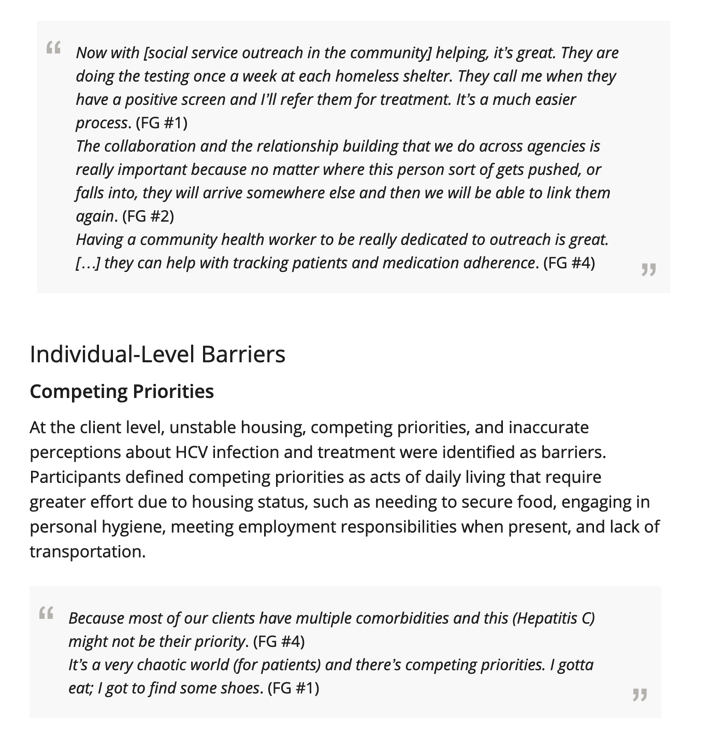
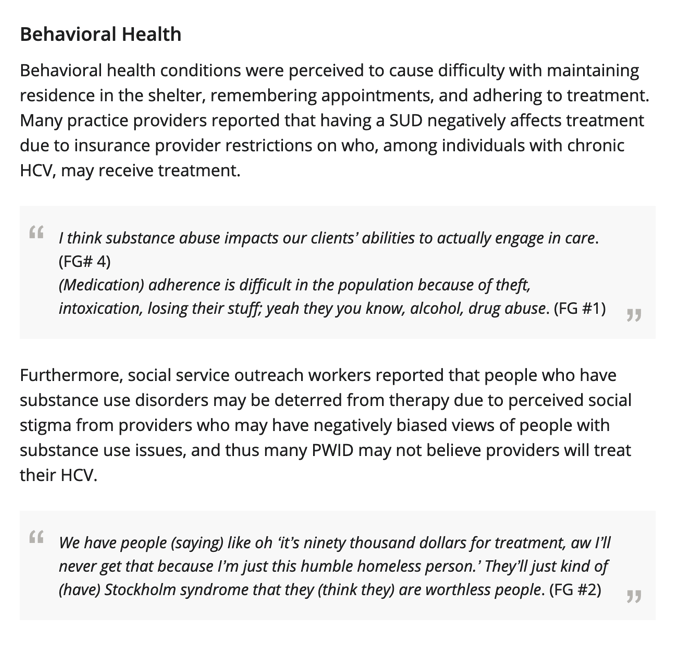
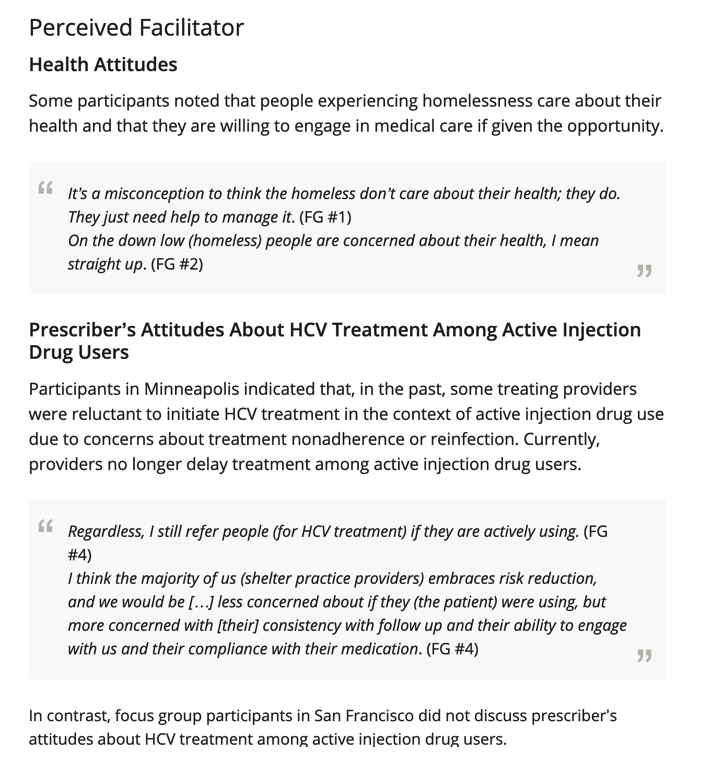
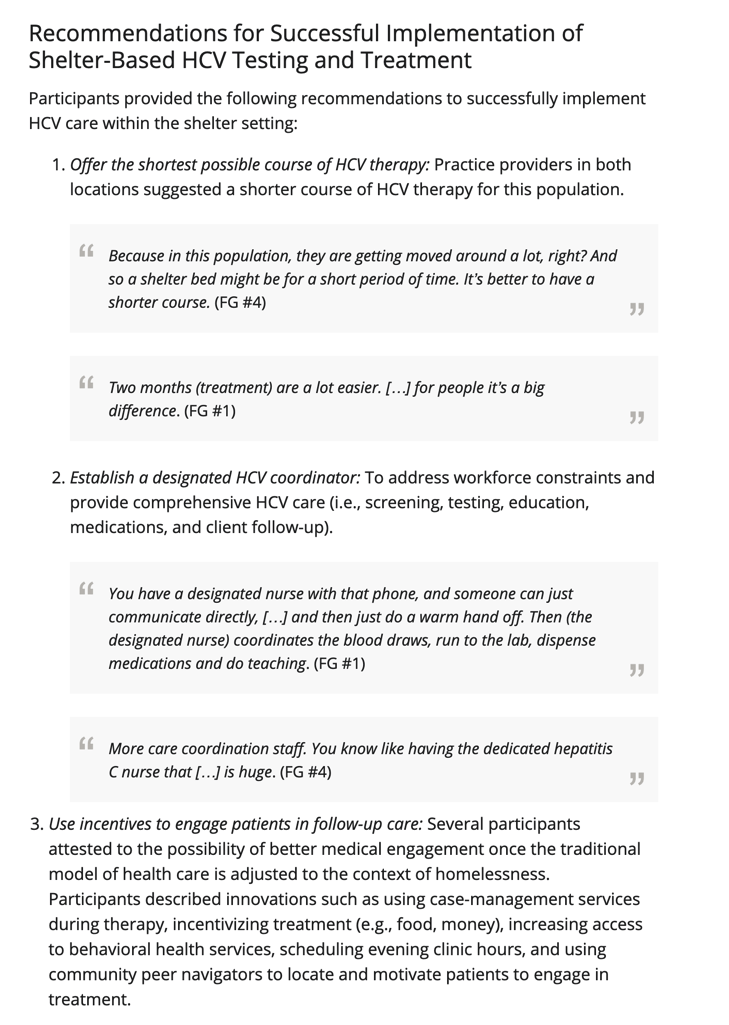
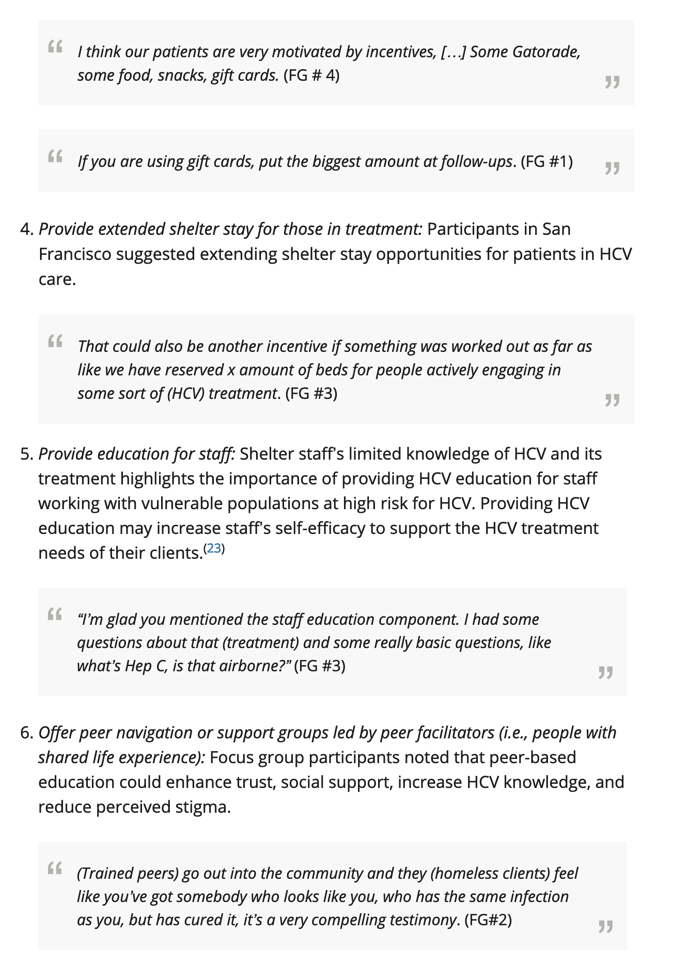
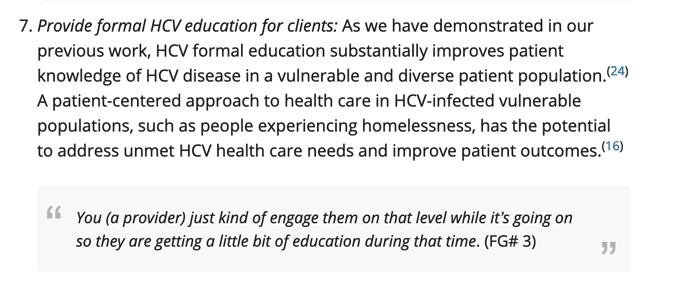
| |
| |
| |
|
|
|